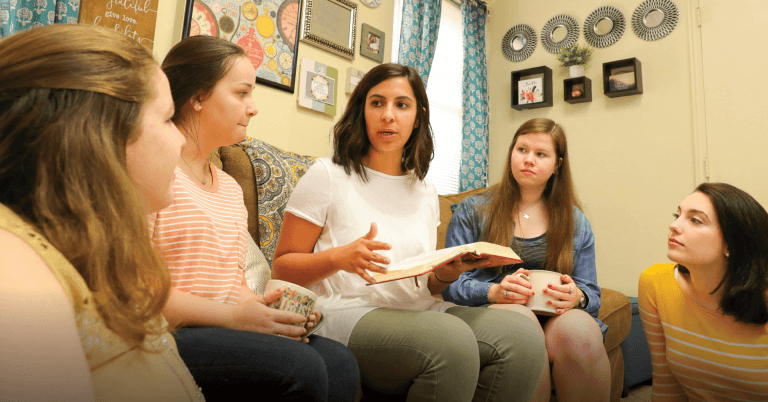Baylor students benefit from presence of professors next door
Thanks to Baylor University’s Faculty-in-Residence program, a number of faculty members are taking their desire to mentor students to a higher level, as they live and interact with them each day in campus residence halls.
Many of today’s Baylor students live and learn in residence halls with students of similar academic aspirations. It’s the result of a mindset that sees residence halls as more than a place for students to eat, sleep and study, and the Faculty-in- Residence program has become an important part of the mix.
“With faculty living among the students, our residence halls are extensions of a student’s academic life,” said Dr. Terri Garrett, Baylor’s associate director for academic initiatives. “We targeted living-learning programs first as a way to intentionally engage faculty from that academic unit in the life of the community.”
The program has evolved and grown in every possible way since that beginning, Garrett said. Because no previous residence halls had been designed with faculty apartments, they have been added as the older halls — including North and South Russell, Penland and Martin —have been renovated. There are now faculty-in-residence in 15 Baylor residential facilities.
A telling measure of the success of the program is the response of the students who live next door to faculty. “We have students who want to live on campus beyond their freshman year,” Garrett said. “They’re seeing the connection. They’re having that seamless experience between their academic life and their living experience.”
Moma Mona
“Mama Mona!” That greeting from students is not unusual as Dr. Mona Choucair walks from her office in the Carroll Science Building to her apartment in South Russell. It’s also a welcome greeting.
“Students can see me as a mama if they want. That’s beautiful –– that’s what this job is for,” she said. “I’m their touchstone, somebody to talk to them and help them if there’s anything going on in their lives.”
Choucair is the faculty-in-residence for more than 300 students in South Russell’s Impact Living- Learning Center. A Baylor alumna who has been on faculty for 17 years, she divides her academic time by serving as a senior lecturer in English and teaching classes in the School of Education. But as faculty-in-residence, Choucair gives everyone her undivided attention.
“It can be exhausting, so you have to have quite a bit of energy,” she said.
Her faculty apartment is large enough to accomodate group gatherings. Choucair often hosts up to 40 students for dinner. “They’re called Mama Mona Dinners, and I’m not a mom, I’m not married, and so it’s wonderful to be called Mama,” she said. “I measure success not in the number who come to my dinner table but by those relationships that are forged over a meal that I can follow up on two months or a year later.”
Choucair said the faculty-in-residence experience has taught her how to listen. “At first I thought, in this role I will have to ask how they’re doing. But now I know that if I am just present, they will talk,” she said. “I’m not saying I’m the answer, because they also have pastors, they have youth ministers, they have community leaders, they have our wonderful program director and hall director and they have our chaplain.”
Choucair said living next to students in the residence hall has also enhanced her teaching.
“I’m a better teacher knowing where they’ve just come from. Knowing they’re having roommate problems. Or they didn’t make it to breakfast so they’re not in the best mood. Or they just failed three tests and feel like they’re not Baylor material anymore,” Choucair said. “It makes me realize there are so many things going on with those kids in that class.”
During her first year as faculty-in-residence, Choucair had a student in the hall whose parent died just before the beginning of the semester. A chance encounter with her across campus led to a yearlong conversation, during which Choucair shared the loss of her own father at age 16.
“I remember talking to her and thinking –– this is not an accident, I was supposed to talk to this student,” she said. “Chance encounters are some of the coolest things that come from this job. One encounter might change that kid, and that’s a huge responsibility.”

